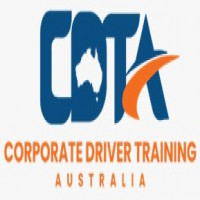Navigating the Blind Spots: Understanding Where Trucks Lack Visibility

Strong 8k brings an ultra-HD IPTV experience to your living room and your pocket.
Blind spots are areas around a vehicle that are difficult to see even from the mirrors. They make it difficult for the drivers to drive safely. If another driver is in the blind spot of the one driving ahead, the first may not be aware of the other driver while taking a turn or changing lanes. This can lead to accidents and is dangerous for the pedestrians as well as the drivers. And when it’s a large vehicle like a semi-truck or truck, this problem becomes even more pronounced. Indeed, large trucks have extra height and larger mirrors than other vehicles, giving drivers a better view of the road. But these trucks also have many significant blind spots. It is important for truck drivers to know these blind spots and make sure to clear them before driving on the road. Corporate driver training can help drivers learn more about these blind spots and how to navigate them better. Here are the different blind spots that truck drivers need to be aware of:
Front Blind Spot:
Trucks have a large body with a lot of height. While this can be advantageous on the road, it is also a cause for concern. Due to their height, trucks have a big blind spot in the front that extends approximately 20 feet ahead. This means the truckers cannot see any vehicles or pedestrians in front of them for 20 feet. This can pose a serious risk for pedestrians as well as other vehicles on the road, especially those merging lanes in front of the truck.
Rear Blind Spot:
Trucks have a big rear blind spot. Drivers in the truck find it difficult to see vehicles that are directly behind them. Hence, passing vehicles or those merging lanes are not easily visible to the truck drivers. Trucks don’t have rear-view mirrors so the truck drivers often depend on their side mirrors to see vehicles behind them. So, it’s better for other drivers to keep a good distance between their vehicles and the trucks. Corporate driver training can help drivers develop a safety-first mindset and keep the recommended distance when driving along with a truck.
Side Blind Spots:
Large vehicle bodies also bring with them bigger problems. Other than the front and rear areas, a truck also has huge blind spots on both sides. Along with their heights, trucks are often bigger in length too. This reduces visibility in the areas from the driver’s side doors to the rear of the trucks for the truck drivers. While side mirrors can help reduce this blind spot, it is the driver’s duty to try and cover as much of the blind spot as possible. Also, other vehicles on the road need to be aware of these limitations of trucks and keep a safer distance. Low risk driving courses can help drivers learn about the blind spots of trucks and how to avoid them to increase road safety and avoid accidents.
No-Zone Areas:
No-zone areas are a truck’s blind spots. These areas are not properly visible to the truck drivers and hence pose a risk to all on the road. Other drivers on the road should avoid driving in these no-zone areas to minimize the possibility of accidents. Even if it becomes necessary to approach a truck’s blind spots for taking over, passing, or changing lanes, drivers should signal the truckers about their intention and keep a safe distance between their vehicles and the truck.
Conclusion
As drivers, it is important to have road and vehicle awareness along with driving skills. Whether you’re a truck driver or drive any other vehicle, having knowledge of a truck’s blind spots can come in handy, especially for corporate drivers. Programs like corporate drivers training teach you to be aware of these blind spots and adjust your behavior accordingly to avoid accidents. Corporate Drivers Training Australia and other similar institutes offer various courses to help drivers develop a habit of safe and responsible driving.
SourceLink[https://norvasen.com/navigating-the-blind-spots-understanding-where-trucks-lack-visibility/]
Note: IndiBlogHub features both user-submitted and editorial content. We do not verify third-party contributions. Read our Disclaimer and Privacy Policyfor details.


